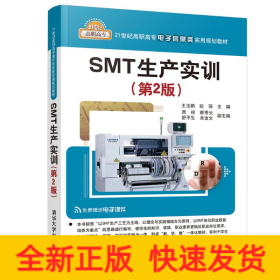
文化创意产业融合发展研究
全新正版 极速发货
¥ 26.64 5.6折 ¥ 48 全新
库存2件
广东广州
认证卖家担保交易快速发货售后保障
作者赵玉宏 著
出版社经济日报出版社
ISBN9787519602666
出版时间2018-01
装帧平装
开本16开
定价48元
货号1201630319
上书时间2024-10-04
- 最新上架
商品详情
- 品相描述:全新
- 商品描述
-
作者简介
赵玉宏,女,1981年生,中国传媒大学传媒经济学博士,北京大学艺术学院博士后,现任北京市社会科学院传媒研究所副研究员。兼任中国电影家协会会员,中国翻译协会对外传播专家委员会委员,中国高校影视传播学会影视靠前传播专业委员会理事等。主要研究领域为跨文化传播、文化产业研究以及影视翻译等。自2008年从事文化创意产业、跨文化传播相关研究工作以来,出版专著1部;任《中国文化产业辞典》《北京市文化创意产业蓝皮书》《文化创意产业与新媒体论丛》等著作的副主编;在《现代传播》《当代电视》《人民日报》海外版、《中国文化报》等刊物发表论文几十篇,主持和参与过国家社科基金课题、文化部、商务部及北京市社科规划基金等多项课题。
目录
第一章绪论001
一、研究背景002
(一)信息技术发展加速文化创意产业融合002
(二)北京文化创意产业呈现出高成长性003
二、研究意义005
三、研究内容006
四、研究方法007
第二章文献综述009
一、产业融合理论研究现状010
(一)国外产业融合研究现状010
(二)国内产业融合研究现状013
二、文化创意产业融合研究现状017
(一)文化创意产业融合动因研究018
(二)文化创意产业融合模式研究019
(三)融合案例研究021
三、北京文化创意产业融合研究现状023
第三章文化创意产业融合发展的动因和方式027
一、文化创意产业融合发展的动因028
(一)基础驱动力:技术创新028
(二)内部驱动力:企业驱动+需求拉动031
(三)外部驱动力:政府推动034
二、文化创意产业融合发展的方式040
(一)技术融合040
(二)产品融合042
(三)市场融合043
(四)企业融合045
第四章北京市文化创意产业融合发展的现状及问题047
一、北京市文化创意产业融合发展的基础——基于PEST宏观分析048
(一)政治与法律环境049
(二)经济与信息环境055
(三)社会与人文环境067
(四)技术与产业环境072
二、北京市文化创意产业融合的类别078
(一)文化创意产业的跨界融合078
(二)文化创意产业内部融合083
三、北京文化创意产业融合发展中存在的问题084
(一)文化创意产业链融合发展不足084
(二)文化创意产业对相关产业的辐射带动效应有待提高087
(三)对文化创意产业融合发展缺乏统一指导088
四、本章小结090
第五章文化创意产业融合案例研究091
一、内部融合案例——影视产业和文化旅游业融合092
(一)影视旅游概念093
(二)影视旅游的类型095
(三)影视旅游的特点097
(四)影视旅游案例分析——北京怀柔影视基地098
二、外部融合案例——旅游业与农业融合102
(一)旅游农业概念102
(二)北京旅游农业产业现状103
(三)北京旅游农业融合开发模式104
(四)北京旅游农业融合的意义110
第六章北京市文化创意产业融合发展对策建议113
一、政府层面115
(一)探索“大部制”的融合型政府管理模式115
(二)放松管制,优化产业融合的配套政策117
(三)建立全面的人才体系,消除文化产业融合的人才瓶颈120
(四)促进北京市文化创意产业集群化发展121
(五)推进北京文化创意产业国际化进程122
二、社会层面123
(一)依托文化创意产业协会,对接政府职能部门123
(二)利用文化创意产业联盟,搭建融合信息平台125
三、企业层面128
(一)产业渗透融合发展模式128
(二)产业延伸融合发展模式130
(三)产业重组融合发展模式132
小结135
参考文献137
内容摘要
随着我国文化创意产业的快速发展,文化创意以及设计服务已经渗透并贯穿在各领域各行业,逐渐呈现出多向交互融合的态势。促进文化创意产业与其他实体经济深度融合,进一步推进我国文化创意产业发展,是调整经济结构和转变发展方式、发展创新型经济的重要途径;通过文化创意改变产品服务内容和质量、提升文化消费水平,是培育我国国民经济新的增长点、提升国家文化软实力和产业竞争力的重大举措。在此背景下,本书以北京市的文化创意产业为例,分析文化创意产业与其他产业之间的融合发展以及在国民经济中的关联、辐射作用。
精彩内容
内容摘要近年来,随着我国文化创意产业的快速发展,文化创意以及设计服务已经渗透并贯穿在各领域各行业,逐渐呈现出多向交互融合的态势。促进文化创意产业与其他实体经济深度融合,进一步推进我国文化创意产业发展,是调整经济结构和转变发展方式、发展创新型经济的重要途径;通过文化创意改变产品服务内容和质量、提升文化消费水平,是培育我国国民经济新的增长点、提升国家文化软实力和产业竞争力的重大举措。在此背景下,本研究以北京市的文化创意产业为例,分析文化创意产业与其他产业之间的融合发展以及在国民经济中的关联、辐射作用。全书共分六个部分:第一章为绪论,包括研究背景、研究意义、研究内容、研究方法及主要创新点和难点。第二章为文化创意产业融合理论研究的文献综述,是本研究主要的理论依据。第三章分析文化创意产业融合发展的动因及方式,分析指出技术创新、企业驱动和政府推动是文化创意产业融合发展的动因,这些因素促使文化创意产业进行技术融合、产品融合、市场融合和企业融合。这一部分的分析是为了针对北京市文化创意产业融合发展对策的提出提供依据,为本研究的对策提出部分做了理论上的铺垫。第四章是北京市文化创意产业融合发展的实证分析,利用PEST分析模型对北京市文化创意产业融合发展的政治法律环境、经济信息环境、社会人文环境以及技术产业环境进行详细分析,找出北京市文化创意产业融合发展的问题所在。同时,这一部分还将分析北京文化创意产业融合的类别,将文化创意产业与第一产业、第二产业及第三产业的其他行业融合进行分门别类的描述。第五章采取案例分析的方式对文化创意产业内部融合业态和外部融合业态进行个案分析,探讨适合北京市文化创意产业各门类的发展方式,论述涵盖了影视产业和旅游产业的内部融合以及旅游产业和农业的外部融合。第六章是结论及对策建议部分,对全书的结论进一步汇总、分析,进而从政府层面、社会层面和企业层面三个方面提出推动北京市文化创意产业融合发展的对策建议。从政府层面上来讲,第一:积极探索“大部制”的融合型政府管理模式有利于政府提高行政效率、降低行政成本;第二:通过放松管制、创造宽松的制度条件和配套政策有利于进一步引导文化创意产业融合;第三:建立全面的人才体系,是文化创意产业融合发展和持续繁荣的关键;第四:促进北京文化创意产业集群化发展,有利于增强产业凝聚性,发挥规模经济效应;第五:推进北京文化创意产业国际化进程,制定国际化发展战略以促进北京文化创意产业与国际市场的融合。从社会层面来讲,文化创意产业融合的发展离不开非政府组织的参与,利用产业协会促进文化创意产业结构升级;通过文化创意产业联盟搭建文化产业融合平台,开展产业间合作、信息、投资及人才交流等服务。从企业层面来讲,为促进产业融合,可以通过产业渗透、产业延伸以及产业重组等方式来调整企业结构,完善产业价值链,实现文化创意产业的快速发展。在产业融合的背景下,本研究首次运用“产业融合”理论系统地对文化创意产业发展问题进行探索性研究,以发达的北京市文化创意产业作为研究对象,进行文化创意产业融合发展研究,这不仅对文化产业的研究是一种创新,同时也大大拓宽了产业融合的研究视野。研究的实践意义体现在本研究着重分析了文化创意产业融合发展的动力机制,融合方式以及实现机制,并从宏观、中观、微观层面对北京市文化创意产业融合发展策略提出建议。这对文化创意企业以及政府相关文化创意产业政策的制定具有现实的指导意义,也为社会投资决策提供参考依据。关键词:文化创意产业,产业融合,产业链延伸AbstractIn recent years, with the accelerated development of China's culturalindustry, cultural creativity and design services have been throughout all sectors of economic and so fields, showing a multi-directional and interactional fusion trend. To promote the development of cultural and creative industries,and encourage its depth integration with other entities, is major initiatives to cultivate new growth point of national economy and enhance national cultural soft power and industrial competitiveness, and is an important way to adjust the economic structure and change the developmental way.This book takes Beijing cultural and creative industries as an example, to analyze the convergence of cultural and creative industries and other industries and its associational and radiation effect in the national economy.This book is divided into six parts:The first chapter is an introduction,including research background, significance, research contents, research methods and major innovations and difficulties. The second chapter is literature review of theory of cultural and creative industries convergence, which is the theoretical basis for this paper. The third chapter analyzes the motives and manners of the convergence of cultural and creative industries, and points out that technological innovation, business -driven and government promotion are the motivation of the cultural and creative industries convergence, those factors have contributed to the cultural and creative industries to technology integration,product integration, market integration, and enterprise integration. This part of the analysis is to provide reasons for proposing the developing countermeasures for Beijing cultural and creative industries integration, as the theoretical groundwork for the part of the study countermeasures. The fourth chapter is the empirical analysis of the convergence of Beijing cultural and creative industries, using PEST analysis model to analyze the political environment, economic environment, so environment and technological environment of the integration of the development of Beijing cultural and creative industries, and finding out the problems of Beijing cultural and creative industries. At the same time, this part also explores the classification of convergence of Beijing cultural and creative industries, including its integration with the primary industry, secondary industry and other industries belonging to the tertiary industry. The fifth chapter is the case study, analyzing the internal integration and external integration manner for cultural and creative industries, discussing the suitable way for the various categories of Beijing cultural and creative industries. It includes the convergence of film and TV industry with tourism industry as the example of internal convergence, and the integration of tourism industry with agriculture industry as the external convergence. The sixth chapter is part of the conclusions and suggestions. By the further summary and analysis on the conclusions of the full text, it then put forward some suggestions from three perspectives to promote the integration of Beijing cultural and creative industries, i.e. from the government level, the so level and the corporate level.Under the background of industrial convergence, this study is the first attempt to use“ industrial convergence” theory to explore systematically the development of cultural and creative industries, taking Beijing cultural and creative industries developed as a research object, which is not only an innovative for the study of the cultural industry, but also greatly expanded the research horizons for the industrial convergence. Practical significance of the study is reflected in that this paper analyzes the dynamic mechanism, the methods and implementation
— 没有更多了 —












以下为对购买帮助不大的评价